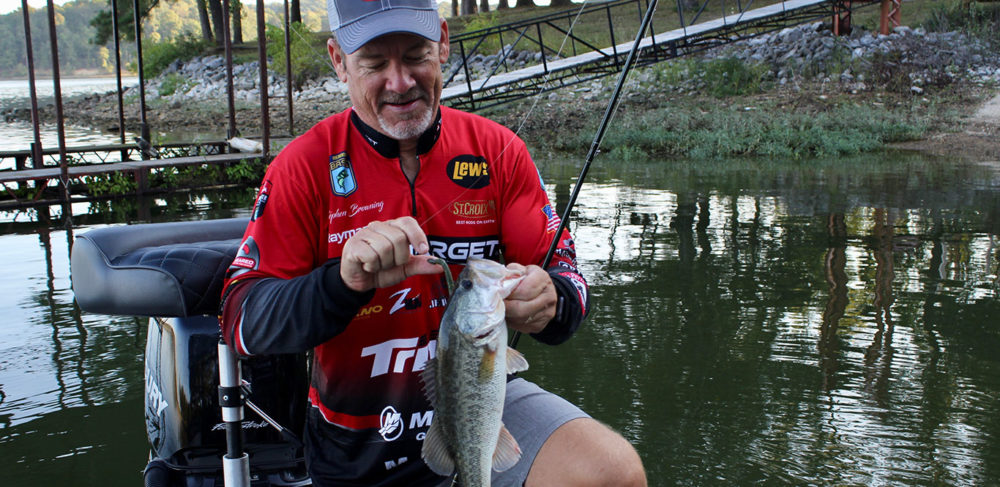Why Stephen Browning Sticks with Stick Worms
You can expect to see this new Major League Fishing pro throwing this go-to at Bass Pro Tour events

Stick worms are staples in bass arsenals everywhere.
“It’s one of those baits I have tied on 95 percent of the time,” says Major League Fishing pro Stephen Browning, who tallied nearly $1.4 million in earnings as a B.A.S.S. standout. “It’s a go-to bait, a bait that gets you bites.”
Many anglers overlook it as a flipping and pitching tool today, allowing creature- and beaver-style baits to take up much of that action. Browning warns: abandon it at your own risk!
A Texas-rigged stick worm is extremely versatile. It can be used to cover water with long casts or pitched to tight cover locations.
“The stick worm gives the fish a little different look,” he explains. “It doesn’t present the big profile of the jig or a big soft plastic like your beaver-style bait. It just delivers more of a finesse-style look than some of those others.”
Studies hint that the shape alone of a stick worm may have much to do with its bass appeal. That shouldn’t surprise us, notes Browning, who holds a degree in fisheries management. Bass have known that familiar shape since their earliest taste of zooplankton.
“If you think about it, a young-of-the-year bass starts feeding on little bitty worm-like microorganisms,” says Browning. “That shape is imprinted on their brains from a very young age as food. It’s good stuff that’s not going to harm them.”

Rigging to weather
Weather factors heavily in the mood and activity levels of a bass, Browning stresses. His worm rigging options are similarly influenced.
“I really feel weather affects how bass are going to feed on a particular day,” he says. “If we have a little rain or cold front forecasted, the fish will hit a little more actively on the pre-frontal bite than they will after the front pushes through.”
Browning fishes his stick worms with baitcasting tackle, preferring a Lew’s BB1 Pro reel spooled with 20-pound Gamma Fluorocarbon line. The reel’s line capacity serves well in pitching and flipping situations, yet it enables long casts as well.
His standard rig is a Z-Man ZinkerZ stick worm on a 4/0 Mustad Grip Pin Hook. He positions the head of the worm atop the Grip Pin’s keeper system. That enables him to take advantage of the Z-Man ElaZtech material’s durability. Rigged this way, the worm will hold its position on the hook and maintain its integrity.
He uses Strike King Tour Grade Tungsten bullet-nose weights ranging from 3/16 to 5/16 ounce. Weather dictates the weight he will use and the pace of presentation.
“On those pre-frontal days, I go to a 5/16-ounce weight to get a faster rate of fall,” he explains. “I can cover more water that way.”
Post-frontal conditions call for a slower presentation.
“Once the front passes through, I go to a 3/16-ounce weight, and I really slow that bait down,” he continues.
Details, details
Browning makes a point of NOT pegging his sinker unless necessary. A free-sliding sinker gives his worm freedom as it falls and undulates, presenting a more tantalizing target to his prey.
“The exceptions would be where I might be fishing in vegetation as in Florida, or around boat docks that have brush piles,” he qualifies. “If I feel I need to get my bait down through the brush, then I peg the sinker.”
Browning adds that stick worms have universal bass appeal. They can fool big fish and fill limits.
“Even though it’s a ‘finessy’ looking bait, big fish will eat it just as well as the little ones,” he says. “I have caught fish from one pound to 10 pounds on it.”